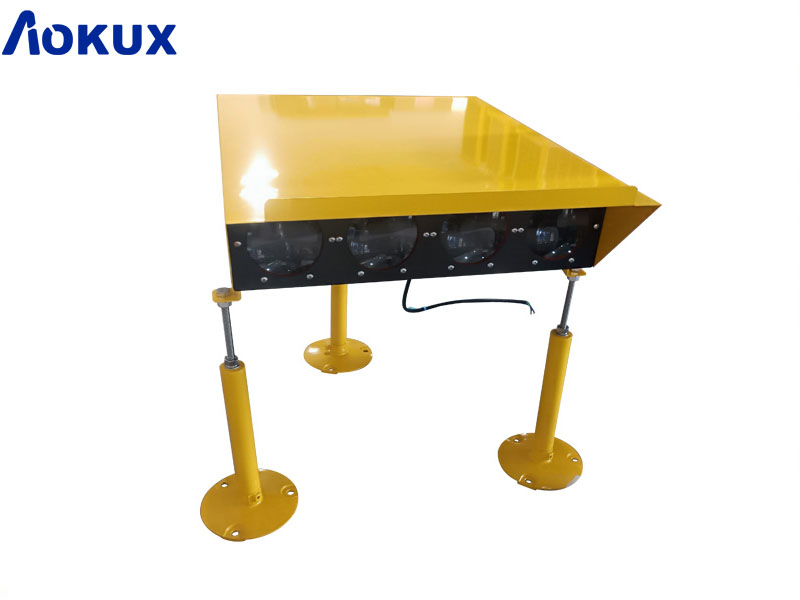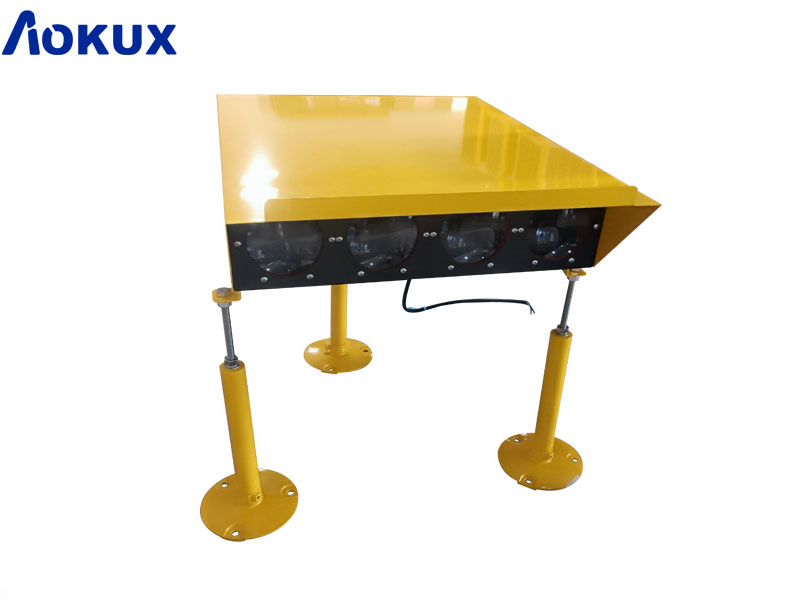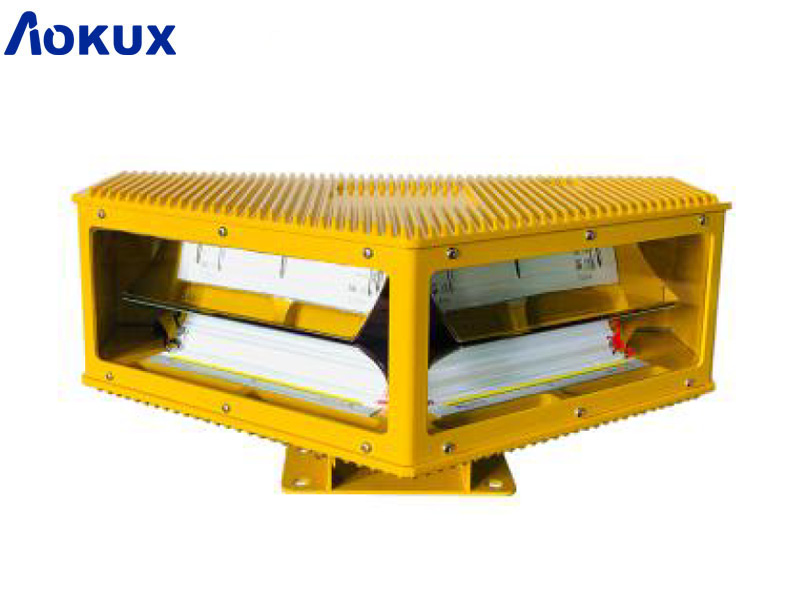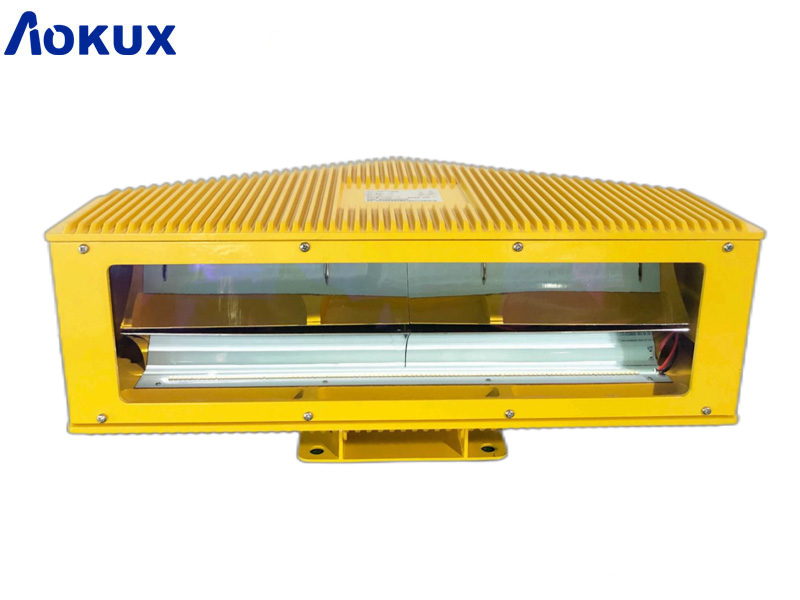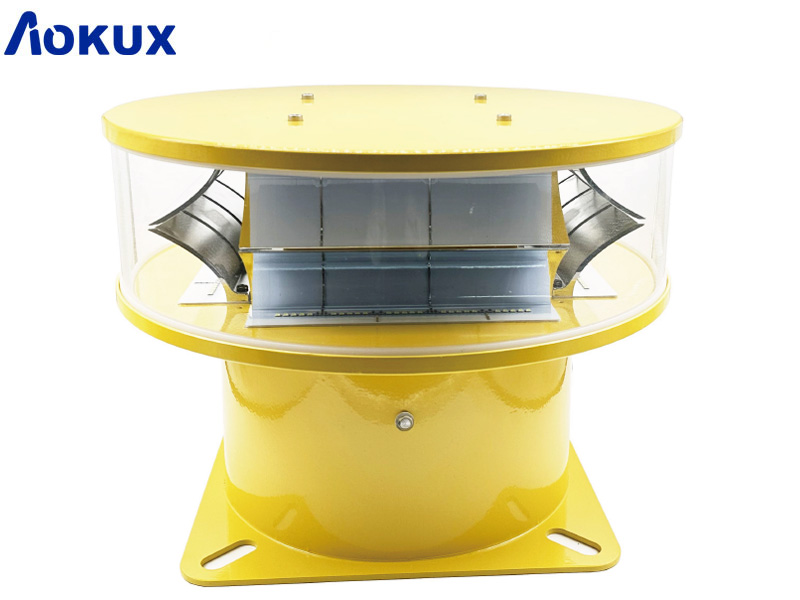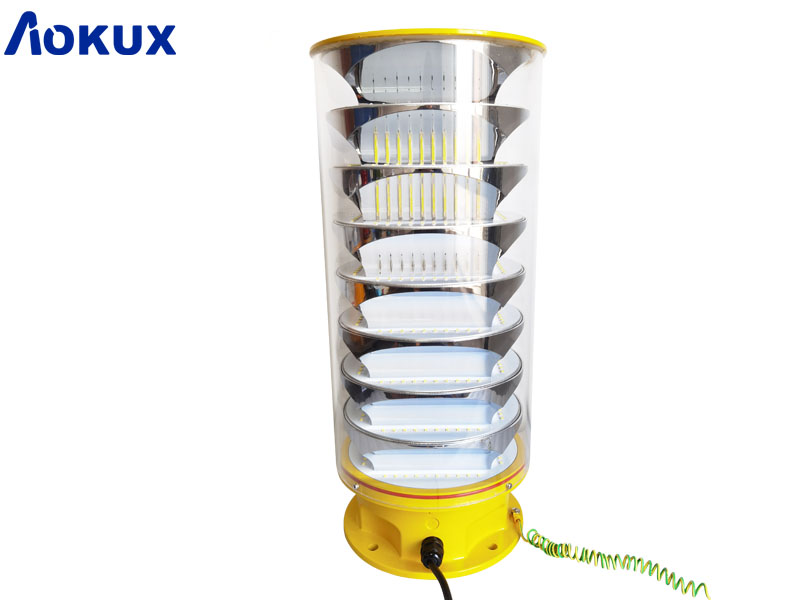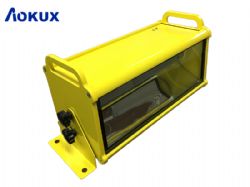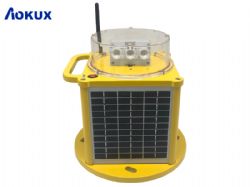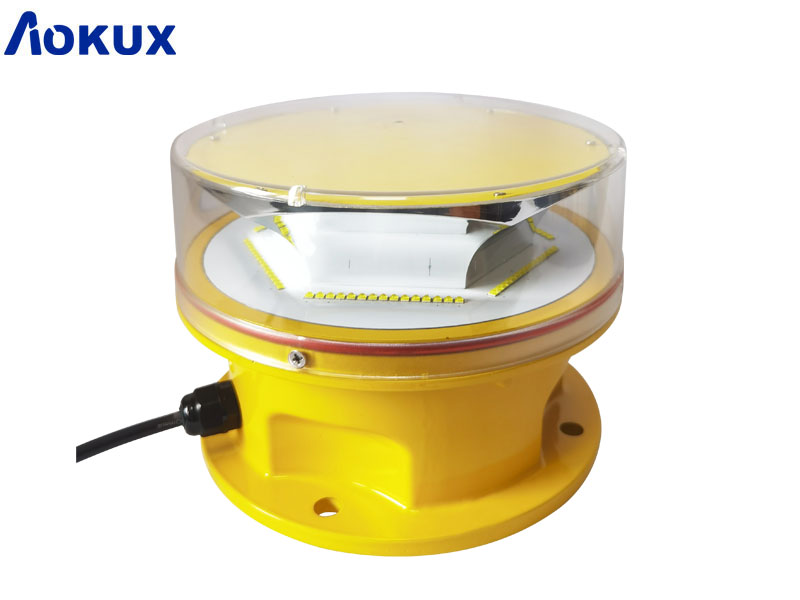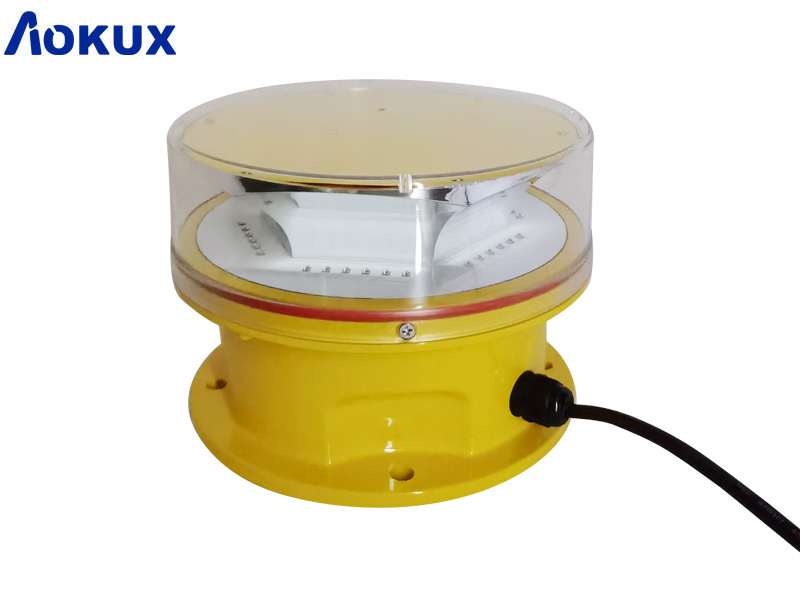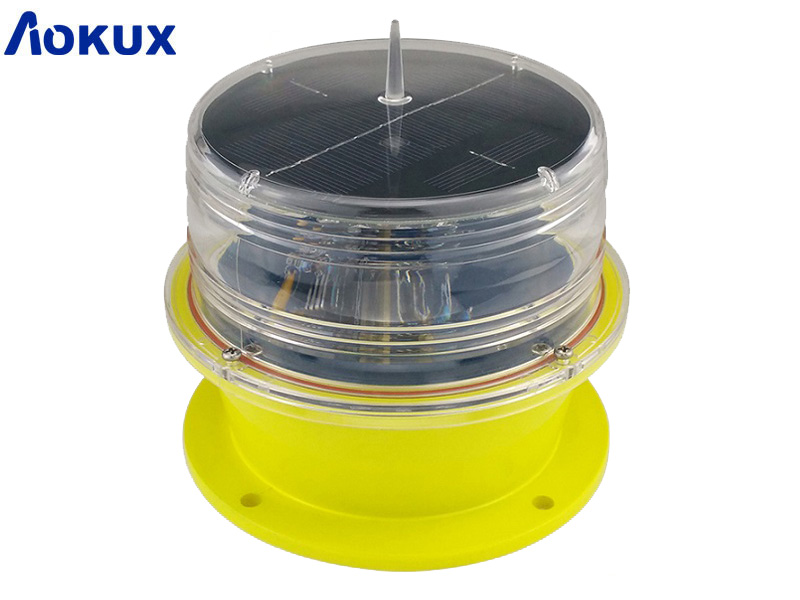Precision Approach Path Indicator (PAPI) lights play a crucial role in aviation safety by providing pilots with visual guidance during the approach phase of an aircraft landing. These lights are installed on the side of the runway and consist of a series of light units that emit a specific color combination to indicate the aircraft's position relative to the optimal glide path. Let's explore the significance of PAPI lights and their role in enhancing aviation safety.
The functionality of PAPI light is based on a simple color code system. When the aircraft is below the glide path, the pilot sees two red lights and two white lights. This indicates that the aircraft is too low and needs to increase its rate of climb. Conversely, if the aircraft is above the glide path, the pilot sees two white lights and two red lights, signaling that the aircraft is too high and needs to descend. When the aircraft is on the correct glide path, the pilot sees two white lights and two red lights, indicating that the aircraft is in the proper position for a safe landing.
The use of PAPI lights greatly enhances aviation safety by providing pilots with a consistent and reliable visual reference during the critical phase of landing. These lights are carefully calibrated to ensure accurate guidance, taking into account factors such as aircraft approach speed, runway length, and terrain. This allows pilots to make precise landing decisions, reducing the risk of runway undershoots or overshoots.
PAPI lights are designed to be highly visible in various weather conditions, including low visibility and at night. Equipped with precision optical lenses, they focus and direct the light emitted by the lamps, creating a visible glide path for the pilot. This ensures that pilots can make accurate judgments even in adverse weather conditions, enabling them to perform safe landings.
PAPI lights are widely implemented in aviation, particularly at airports with instrument approach procedures. They are valuable tools for pilots, providing a consistent and easily understandable visual reference during the landing process. The use of PAPI lights enhances safety by helping pilots maintain the correct glide path, reducing the risk of runway incidents. Furthermore, PAPI lights contribute to improving operational efficiency at airports. By ensuring pilots have clear visual cues, PAPI lights enable smoother traffic flow and reduce the likelihood of go-arounds or missed approaches. This improves overall airport capacity and reduces delays.
In conclusion, PAPI lights are a crucial component in enhancing aviation safety. By providing pilots with clear and easily interpreted visual guidance during the landing phase, PAPI lights assist in maintaining the correct glide path. This reduces the risk of runway undershoots or overshoots, improving the safety of both pilots and passengers. PAPI lights are a valuable asset at airports, contributing to efficient operations and facilitating smooth air traffic flow. As aviation technology continues to advance, the importance of PAPI lights in maintaining safe landings remains unwavering.
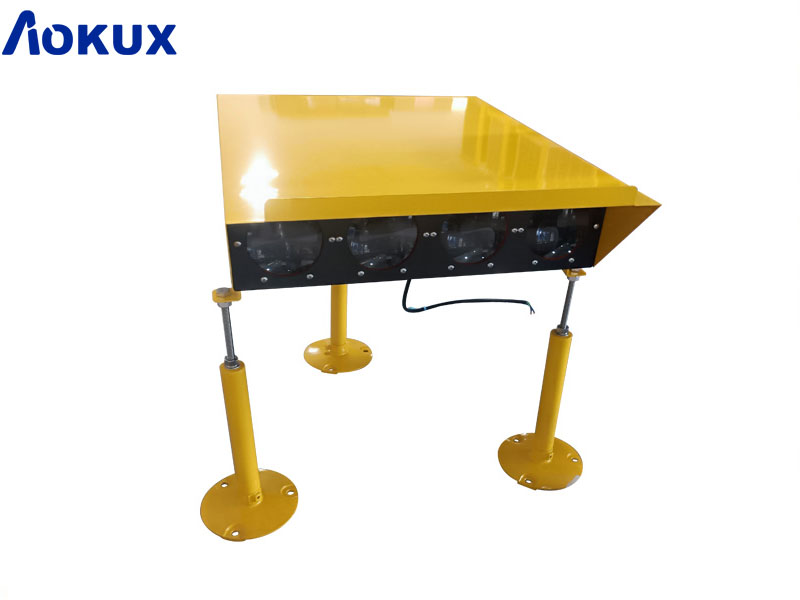
Model AO-HP-PAPI adopts LED technology, Precision Approach Path Indicator (PAPI) is used to guide aircraft to approach the runway at an appropriate altitude. It is specially designed to accommodate the helicopter's steep angles of descent and deliberate speeds.
There are two Colors which to show two wide horizontal beams in different colored light. And it is projected in fan shaped array into the incoming flight pattern.
PAPI light Visual Indication:
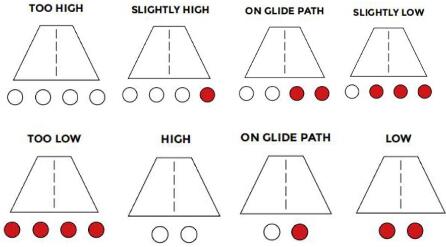
Compliance:
1. ICAO Annex 14 Volume I 6th Edition dated 2013 clauses, 5.3.5.28 5.3.5.40, Figure A2-23 Appendix 1, 2.1.1
2. FAA AC 150/5390-2B Heliport Design Guide
Features:
1. LED as light source saving power consumption and maintenance, 95% less power than equivalent incandescent light.
2. Power supply available in AC(110, 240VAC), DC48V or others.
3. Unique designed polycarbonate lens for converging light and also provides corrosion resistance and UV protection.
4. UV protection Powder coated bright yellow color base make better visibility.
5. Housing material is stainless steel which has strong corrosion resistance, Shock and Vibrations protection.
6. Fragile coupling reduce the secondary damage to helicopters effectively.
Specification:
Dimension(MM):
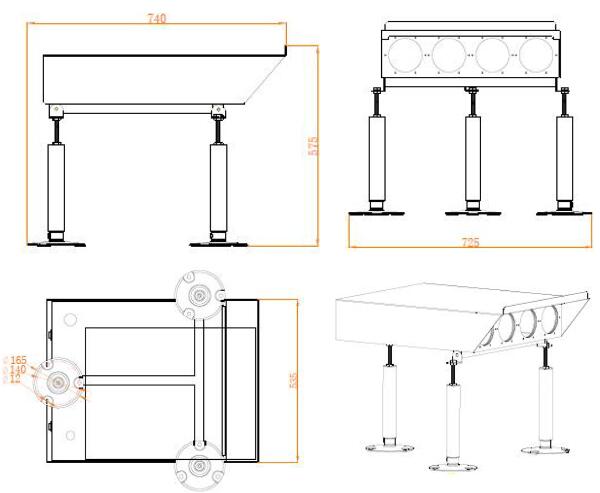
Application:
PAPI lights, or Precision Approach Path Indicator lights, are widely used in aviation to enhance aircraft landing safety. These lights are strategically positioned on the side of the runway and emit a specific color combination to indicate the aircraft's position in relation to the optimal glide path.
The application of PAPI lights is straightforward. Pilots approaching the runway can easily interpret the lights to determine their aircraft's position relative to the desired glide path. If the pilot sees two red lights and two white lights, it indicates that the aircraft is too low and needs to increase its rate of climb. Conversely, if there are two white lights and two red lights, the aircraft is too high and needs to descend. When the pilot observes two white lights and two red lights, it means the aircraft is on the correct glide path for a safe landing.
The use of PAPI lights significantly enhances aviation safety by providing pilots with a clear and reliable visual reference during the critical landing phase. These lights are calibrated precisely, taking into account various factors such as aircraft approach speed, runway length, and terrain, to ensure accurate guidance. They are designed to be highly visible in different weather conditions, including low visibility and nighttime operations.
PAPI lights' application extends beyond safety. They also contribute to improving operational efficiency at airports. By providing pilots with clear visual cues, PAPI lights enable smoother traffic flow and reduce the likelihood of missed approaches or go-arounds. This enhances overall airport capacity and reduces delays.
In conclusion, the application of PAPI lights in aviation is instrumental in enhancing aircraft landing safety. With their simple and intuitive color coding system, these lights provide pilots with clear guidance during the approach phase, reducing the risk of runway incidents. PAPI lights are an indispensable asset at airports, ensuring safer landings and facilitating efficient operations.
Permanent, Temporary, Emergency Helipad/Airport/Helideck
OFFSHORE/ ONSHORE USAGE

The functionality of PAPI light is based on a simple color code system. When the aircraft is below the glide path, the pilot sees two red lights and two white lights. This indicates that the aircraft is too low and needs to increase its rate of climb. Conversely, if the aircraft is above the glide path, the pilot sees two white lights and two red lights, signaling that the aircraft is too high and needs to descend. When the aircraft is on the correct glide path, the pilot sees two white lights and two red lights, indicating that the aircraft is in the proper position for a safe landing.
The use of PAPI lights greatly enhances aviation safety by providing pilots with a consistent and reliable visual reference during the critical phase of landing. These lights are carefully calibrated to ensure accurate guidance, taking into account factors such as aircraft approach speed, runway length, and terrain. This allows pilots to make precise landing decisions, reducing the risk of runway undershoots or overshoots.
PAPI lights are designed to be highly visible in various weather conditions, including low visibility and at night. Equipped with precision optical lenses, they focus and direct the light emitted by the lamps, creating a visible glide path for the pilot. This ensures that pilots can make accurate judgments even in adverse weather conditions, enabling them to perform safe landings.
PAPI lights are widely implemented in aviation, particularly at airports with instrument approach procedures. They are valuable tools for pilots, providing a consistent and easily understandable visual reference during the landing process. The use of PAPI lights enhances safety by helping pilots maintain the correct glide path, reducing the risk of runway incidents. Furthermore, PAPI lights contribute to improving operational efficiency at airports. By ensuring pilots have clear visual cues, PAPI lights enable smoother traffic flow and reduce the likelihood of go-arounds or missed approaches. This improves overall airport capacity and reduces delays.
In conclusion, PAPI lights are a crucial component in enhancing aviation safety. By providing pilots with clear and easily interpreted visual guidance during the landing phase, PAPI lights assist in maintaining the correct glide path. This reduces the risk of runway undershoots or overshoots, improving the safety of both pilots and passengers. PAPI lights are a valuable asset at airports, contributing to efficient operations and facilitating smooth air traffic flow. As aviation technology continues to advance, the importance of PAPI lights in maintaining safe landings remains unwavering.

Model AO-HP-PAPI adopts LED technology, Precision Approach Path Indicator (PAPI) is used to guide aircraft to approach the runway at an appropriate altitude. It is specially designed to accommodate the helicopter's steep angles of descent and deliberate speeds.
There are two Colors which to show two wide horizontal beams in different colored light. And it is projected in fan shaped array into the incoming flight pattern.
PAPI light Visual Indication:

Compliance:
1. ICAO Annex 14 Volume I 6th Edition dated 2013 clauses, 5.3.5.28 5.3.5.40, Figure A2-23 Appendix 1, 2.1.1
2. FAA AC 150/5390-2B Heliport Design Guide
Features:
1. LED as light source saving power consumption and maintenance, 95% less power than equivalent incandescent light.
2. Power supply available in AC(110, 240VAC), DC48V or others.
3. Unique designed polycarbonate lens for converging light and also provides corrosion resistance and UV protection.
4. UV protection Powder coated bright yellow color base make better visibility.
5. Housing material is stainless steel which has strong corrosion resistance, Shock and Vibrations protection.
6. Fragile coupling reduce the secondary damage to helicopters effectively.
Specification:
| Model NO.: | AO-HP-PAPI |
| Light Source | high intensity LED |
|
Available Colors |
Red/White |
|
working mode |
Steady burning |
|
Operation mode |
24 hrs operation after power on |
|
Operation Mode |
24 hours operation |
|
LED Life Experience(hours) |
>100,000 |
|
Operating Voltage |
AC220V, AC120V, DC48V |
|
Power(W) |
4*70W |
|
Body Material |
Stainless steel |
|
Mounting |
140xM10 |
|
Weight(kg) |
19KG |
|
Ambient Temperature(℃) |
-55℃~+70℃ |
|
Humidity |
0%-100% |
|
Wind Speed |
80m/s |
| IP grade | IP66 |
|
Options Available |
VHF pilot to ground remote control Solar power system Wireless Remote Control |
Dimension(MM):

Application:
PAPI lights, or Precision Approach Path Indicator lights, are widely used in aviation to enhance aircraft landing safety. These lights are strategically positioned on the side of the runway and emit a specific color combination to indicate the aircraft's position in relation to the optimal glide path.
The application of PAPI lights is straightforward. Pilots approaching the runway can easily interpret the lights to determine their aircraft's position relative to the desired glide path. If the pilot sees two red lights and two white lights, it indicates that the aircraft is too low and needs to increase its rate of climb. Conversely, if there are two white lights and two red lights, the aircraft is too high and needs to descend. When the pilot observes two white lights and two red lights, it means the aircraft is on the correct glide path for a safe landing.
The use of PAPI lights significantly enhances aviation safety by providing pilots with a clear and reliable visual reference during the critical landing phase. These lights are calibrated precisely, taking into account various factors such as aircraft approach speed, runway length, and terrain, to ensure accurate guidance. They are designed to be highly visible in different weather conditions, including low visibility and nighttime operations.
PAPI lights' application extends beyond safety. They also contribute to improving operational efficiency at airports. By providing pilots with clear visual cues, PAPI lights enable smoother traffic flow and reduce the likelihood of missed approaches or go-arounds. This enhances overall airport capacity and reduces delays.
In conclusion, the application of PAPI lights in aviation is instrumental in enhancing aircraft landing safety. With their simple and intuitive color coding system, these lights provide pilots with clear guidance during the approach phase, reducing the risk of runway incidents. PAPI lights are an indispensable asset at airports, ensuring safer landings and facilitating efficient operations.
Permanent, Temporary, Emergency Helipad/Airport/Helideck
OFFSHORE/ ONSHORE USAGE



